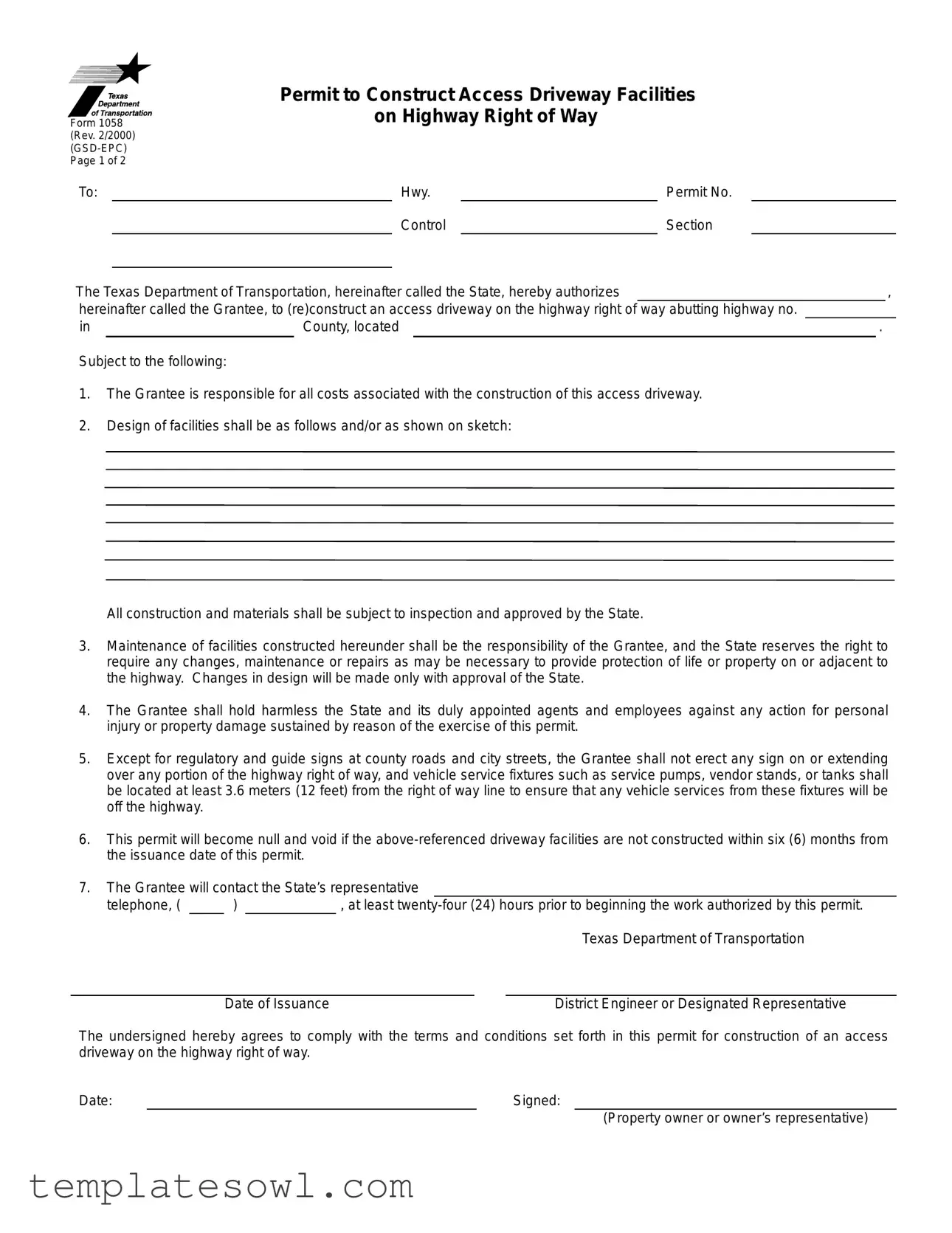What is the purpose of the TxDOT ROW Permit form?
The TxDOT ROW Permit form is designed to authorize individuals or entities to construct access driveways on the highway right of way. It establishes the guidelines and responsibilities for construction, ensures compliance with safety standards, and allows for state oversight during the process.
What information is required on the permit form?
The permit form requires several details, including the name of the grantee, highway number, county location, permit number, and control section. Additionally, sketches for the design of the proposed construction must be submitted, along with acknowledgment of understanding the terms of the permit.
Who is responsible for the costs associated with the construction?
The grantee assumes full responsibility for all costs related to the construction of the access driveway. This responsibility includes any expenses for materials, labor, and compliance with inspection requirements set by the State.
What kind of maintenance is required after the driveway is constructed?
The grantee must maintain the constructed facilities. Regular maintenance ensures safety and functionality. The State can require any necessary modifications or repairs to uphold safety standards and protect life or property adjacent to the highway.
Are there restrictions on signage or vehicle service fixtures?
Yes, the grantee is prohibited from erecting any signage on the highway right of way, with the exception of regulatory and guide signs at county roads and city streets. Additionally, vehicle service fixtures must be situated at least 12 feet from the right of way line, ensuring services occur off the highway.
What happens if the construction is not completed within the specified time frame?
If the driveway facilities are not constructed within six months from the permit's issuance date, the permit automatically becomes null and void. This clause ensures timely compliance and accountability by the grantee.
Is it necessary to notify the State before beginning construction?
Absolutely. The grantee must contact the State’s representative at least 24 hours before starting any work authorized by the permit. This notification is crucial for maintaining coordination and oversight during the construction process.
What are the legal obligations of the grantee under this permit?
The grantee agrees to hold the State and its employees harmless from any claims of personal injury or property damage that may arise due to activities carried out under this permit. This requirement underscores the importance of safety and legal compliance throughout the construction project.

